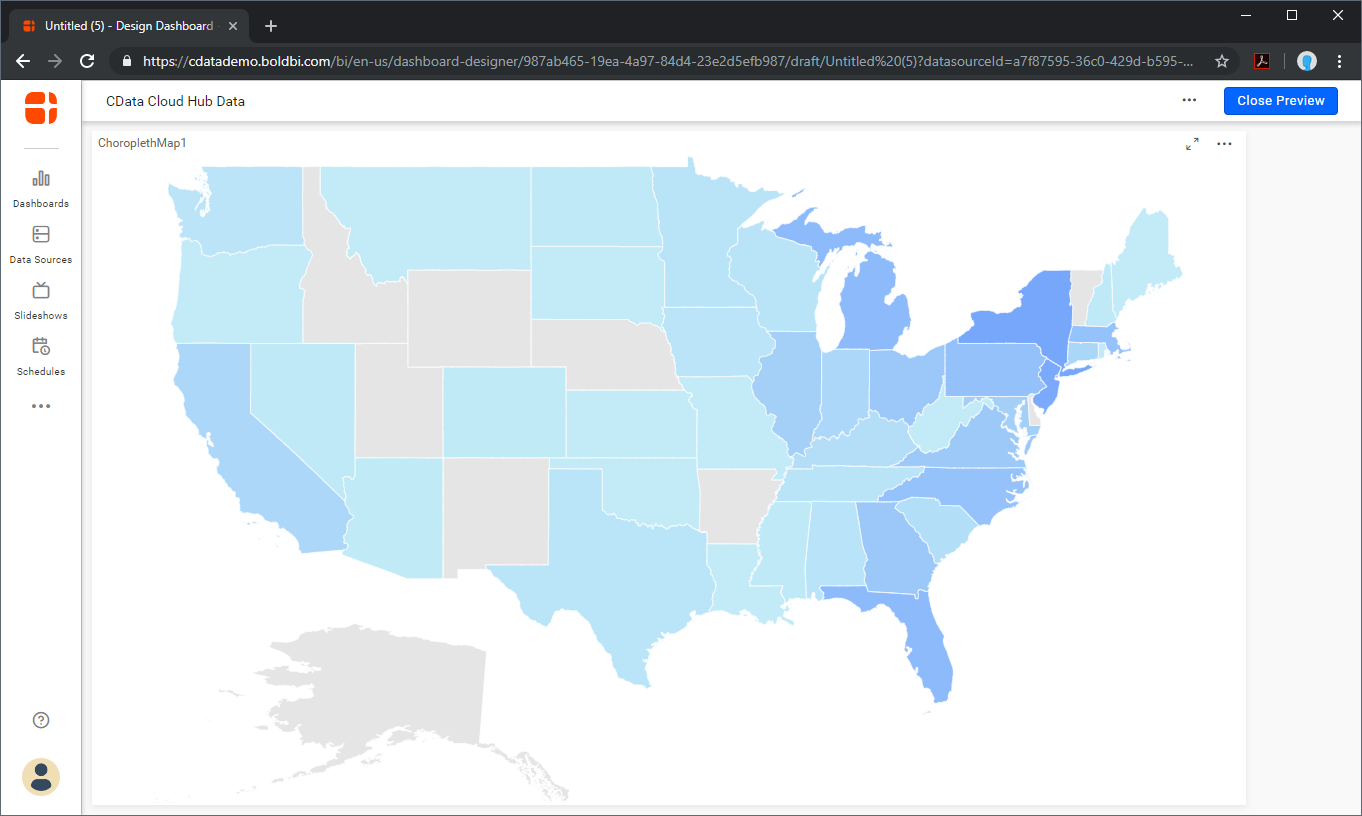Discover how a bimodal integration strategy can address the major data management challenges facing your organization today.
Get the Report →Create Kintone Dashboards in Bold BI
Use CData Connect Server to create a virtual SQL Server Database for Kintone data to build custom dashboards in Bold BI.
Bold BI allows you to create, share, and collaborate on interactive BI dashboards. When paired with CData Connect Server, you get instant access to Kintone data for visualizations, dashboards, and more. This article shows how to create a virtual database for Kintone and build reports from Kintone data in Bold BI.
CData Connect Server provides a pure SQL Server interface for Kintone, allowing you to easily build reports from live Kintone data in Bold BI — without replicating the data to a natively supported database. As you build visualizations, Bold BI generates SQL queries to gather data. Using optimized data processing out of the box, CData Connect Server pushes all supported SQL operations (filters, JOINs, etc) directly to Kintone, leveraging server-side processing to quickly return the requested Kintone data.
Create a Virtual SQL Server Database for Kintone Data
CData Connect Server uses a straightforward, point-and-click interface to connect to data sources and generate APIs.
- Login to Connect Server and click Connections.
![Adding a connection]()
- Select "Kintone" from Available Data Sources.
-
Enter the necessary authentication properties to connect to Kintone.
In addition to the authentication values, set the following parameters to connect to and retrieve data from Kintone:
- Url: The URL of your account.
- GuestSpaceId: Optional. Set this when using a guest space.
Authenticating with Kintone
Kintone supports the following authentication methods.
Using Password Authentication
You must set the following to authenticate:
- User: The username of your account.
- Password: The password of your account.
Using Basic Authentication
If the basic authentication security feature is set on the domain, supply the additional login credentials with BasicAuthUser and BasicAuthPassword. Basic authentication requires these credentials in addition to User and Password.
Using Client SSL
Instead of basic authentication, you can specify a client certificate to authenticate. Set SSLClientCert, SSLClientCertType, SSLClientCertSubject, and SSLClientCertPassword. Additionally, set User and Password to your login credentials.
![Configuring a connection (SQL Server is shown).]()
- Click Save Changes
- Click Privileges -> Add and add the new user (or an existing user) with the appropriate permissions.
With the virtual database created, you are ready to connect to Kintone data from Bold BI.
Visualize Live Kintone Data in Bold BI
The steps below outline connecting to CData Connect Server from Bold BI to create a new Kintone data source and build a simple visualization from the data.
- Log into your Bold BI instance, click the data sources tab, create a new data source, and choose the SQL Server connector.
- Choose the basic configuration and set the connection properties:
- Name: Name your connection
- Server name: Your Connect Server instance (CONNECT_SERVER_URL)
- Port: 1433
- Username: Your Connect Server username
- Password: Your Connect Server password
- Mode: Choose Live to query Kintone on-demand or choose Extract to load the data into Bold BI
- Database: Choose the database you created from the drop-down menu (kintonedb)
- Click Connect
- Select the table to visualize and drag it onto the workspace.
- Select a visualization style and add it to the report.
- Click the gear icon for the visualization to configure the visualization properties and assign columns to the visualization.





SQL Access to Kintone Data from Applications
Now you have a direct connection to live Kintone data from your Bold BI workbook. You can create more data sources and new visualizations, build reports, and more — all without replicating Kintone data.

To get SQL data access to 200+ SaaS, Big Data, and NoSQL sources directly from your applications, see the CData Connect page.








